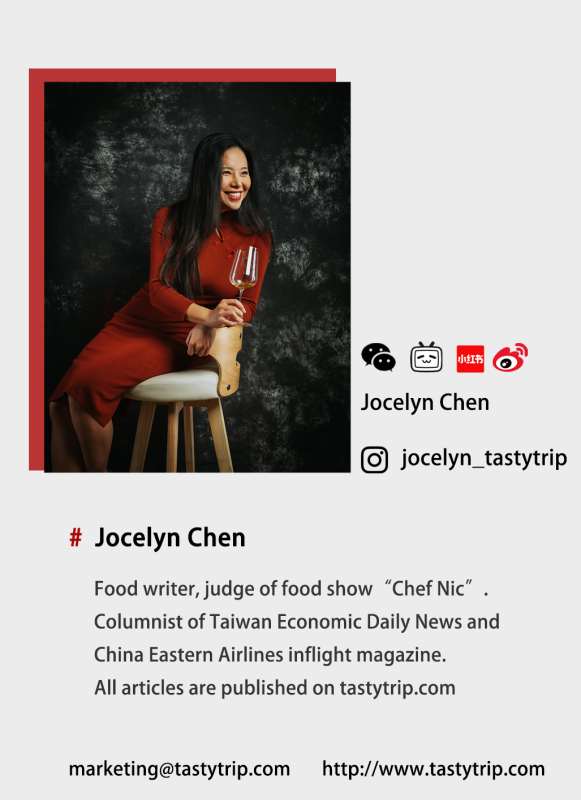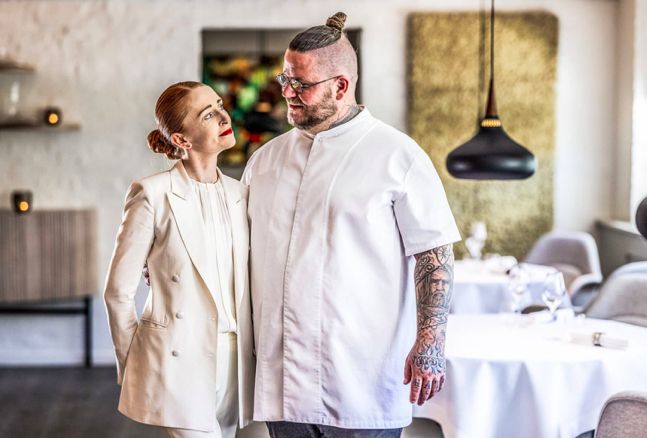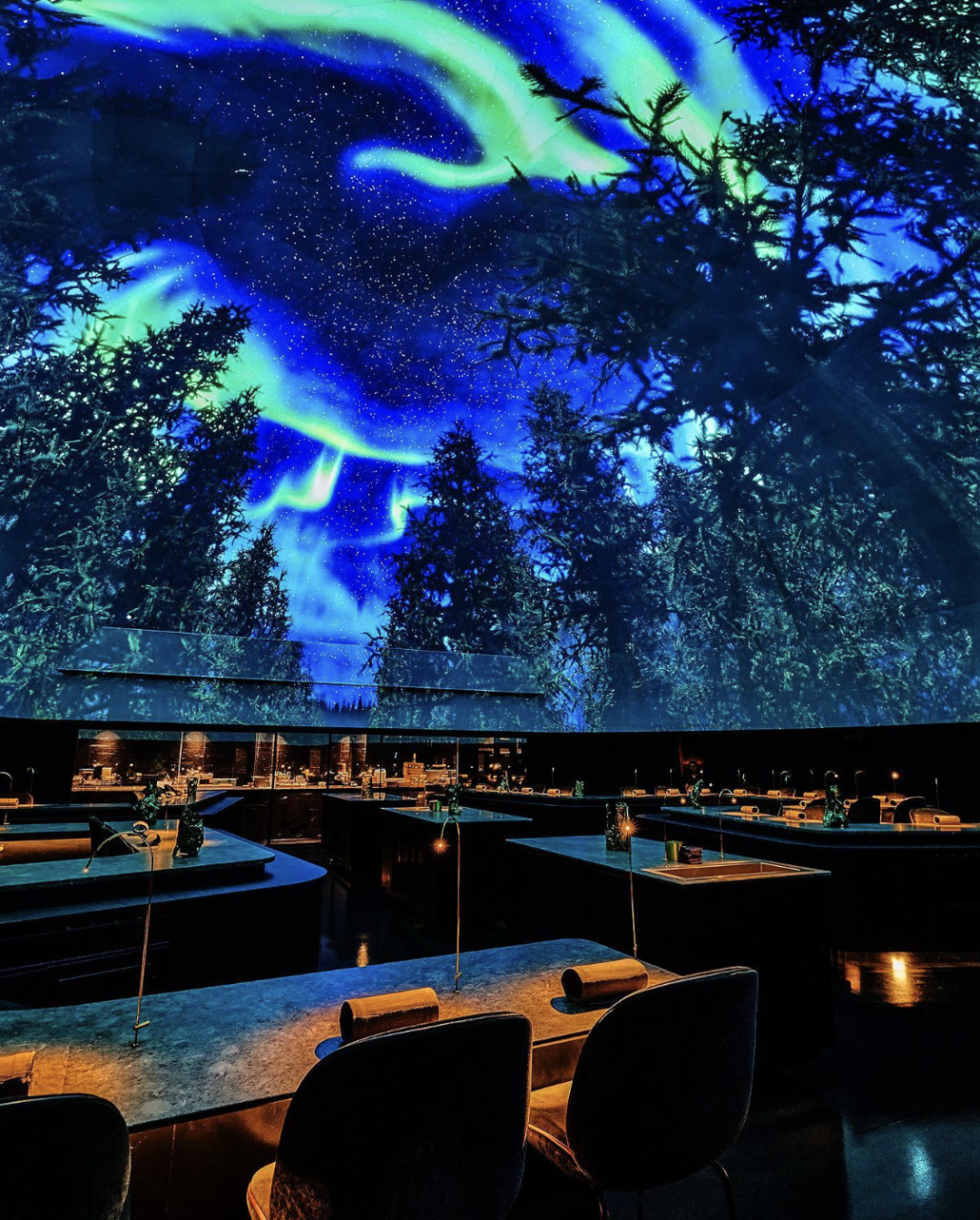Interviewing Mr.Weng Yongjun, the founder of Yong Fu, at the North Bund restaurant in Shanghai, sparked a great interest in his culinary career and profound culinary philosophy. Yong Fu may appear traditional, but it is actually paving an avant-garde and unconventional path. His insights into cross-cultural exchange between the East and the West not only offer novelty but also open up entirely new perspectives for the future of Chinese cuisine.
@Jocelyn华姐的TastyTrip Youtube
From Employment to Entrepreneurship
“I started working as a chef right after graduation and have hardly ever left the food and beverage industry. Since the age of 18, I’ve worked my way up from the kitchen to the stoves, then to leading the stoves, and eventually becoming an executive chef, F&B manager, and F&B director, before being promoted to hotel general manager. It’s been almost 40 years since I entered the industry in 1987,” Mr. Weng recalled. Reflecting on his transition from being a chef to entrepreneurship, he explained, “I started as a chef, and while working in hotels, I always had many ideas about cooking, but it was difficult to implement these creative ideas within a hotel. I always hoped to be able to decide on the kitchen’s menu myself, so I eventually decided to open my own restaurant, where I could freely realize my ideas.”
Distinctive Features of Yong Fu Brands
Since its official opening in 2011, Yong Fu has now expanded to 30 restaurants nationwide, including Yong Fu, Yong Fu Zunxian, and Yong Fu Xiaoxian, each with unique positioning and features. Yong Fu is the high-end brand of the series, with an average consumption per person exceeding 1000 yuan, mainly targeting customers with high demands for raw materials. Yong Fu Zunxian is priced between 400 and 500 yuan, more suitable for simple business banquets. Yong Fu Xiaoxian is a budget-friendly restaurant, with an average consumption of about 250 yuan, mainly catering to ordinary white-collar workers and families.
Yong Fu meets the diverse needs of consumers through clever brand segmentation. Currently, there are three Yong Fu restaurants in Shanghai, each with its unique positioning and customer base. Jinjiang Yong Fu has always been committed to providing traditional Ningbo cuisine, where both business people and returnees can enjoy authentic Ningbo flavors. Mr. Weng emphasized that this was also one of his original purposes in opening Yong Fu in Shanghai, to showcase authentic Ningbo dishes. Secondly, Longbai Yong Fu is a smaller club-style restaurant with four private rooms, providing a more intimate and elegant dining environment. It also focuses on providing authentic Ningbo cuisine for customers seeking a unique dining experience. Mr. Weng talked about his background in the hotel industry, which inspired him to dream of creating a luxurious restaurant that could rival the Chinese restaurants in five-star hotels. Yong Fu on the North Bund is his attempt to realize this vision, where he hopes to make Yong Fu stand out through high standards of design and service.

Yong Fu (Huangpu)
The establishment of Yongfu Mini was in response to the busy booking demand. Due to Yong Fu’s high-end positioning, some price-sensitive customers often find it difficult to understand why the same dishes at Yong Fu are much more expensive than at other branches. The quality and freshness of the ingredients are closely related to the price. Mr. Weng mentioned that the ingredients selected by Yong Fu are carefully chosen, and the quality and freshness far exceed those of ordinary restaurants. To meet the demands of price-sensitive customers, Yong Fu launched Yongfu Mini, which provides equally fresh ingredients at a lower price, but with slightly smaller specifications. This strategy has been widely welcomed in the market. Based on market feedback, Yongfu Zunxian was born to meet the needs of customers who require business banquets.
When asked whether he was concerned about the homogenization among brands, or whether the new brands would affect the original business of Yong Fu, Mr. Weng confidently responded that each brand’s customer positioning is very clear: those who need to entertain important guests will naturally choose Yong Fu, while Yong Fu Zunxian and Yong Fu Xiaoxian are more suitable for simple business dinners or gatherings with friends.
Yong Fu (Hongkou)
At the North Bund, Mr.Weng Yongjun showcases a unique approach to culinary innovation while still preserving the core flavor of Ningbo cuisine. He integrates international perspectives with local traditions to create a series of novel dishes with Ningbo characteristics.

Talking about the characteristics of Ningbo cuisine, Mr. Weng said, “Ningbo is a coastal city, mainly known for its seafood, and each type of seafood has its unique taste. The biggest feature of Ningbo cuisine is its freshness, saltiness, and suitability, maintaining the original taste of the ingredients.” Although Ningbo cuisine has traditionally been seen as home-cooked or rustic food, his goal at North Bund Yong Fu is to give these traditional dishes a more modern and international presentation. Unlike Jinjiang Yong Fu, which uses authentic Ningbo ingredients, North Bund Yong Fu began using high-quality ingredients from around the world. For example, they introduced high-end ingredients that were not commonly used in Ningbo cuisine before, such as dried abalone, elephant trunk clams, and rockfish.
One particularly noteworthy dish is his reinterpretation of traditional abalone dishes. Mr. Weng didn’t simply add luxurious ingredients like black truffles; instead, he used Ningbo fermented bean sauce, which is the most commonly used sauce by Ningbo people. It is usually used to make minced meat steamed eggs or as a seasoning. It is a natural fragrance produced after soybeans are fermented. Sichuan bean paste is fermented using broad beans, which is very different, and the fermentation methods are also different. Ma Guangfan, the abalone prince, said that he had studied abalone for many years and had always wanted to present the taste in a different way but had never found an alternative method. He also highly praised the dish, Ningbo-style abalone (Yoshihama Abalone), which is deeply loved by diners. In addition, Mr. Weng also mentioned his improvement of the traditional Ningbo dish, spicy crab with tofu. He stuffed crab meat from the East China Sea into stinky tofu, and added modern-flavored spicy sauce, not only updating the traditional cooking method but also making the dish more appealing to modern tastes.
Talking about the entire North Bund project, he also admitted to the pressure involved, as it is a heavy investment project. However, his biggest goal in this project is not the financial achievement but rather the smooth operation of the team. “Money is just a number to me.I believe people need to have some pursuit other than that.” he said.
 Yoshihama Abalone
Yoshihama Abalone
Overall, Yong Fu not only preserves the tradition of Ningbo cuisine but also stands out in the global culinary market through innovative cooking methods, while maintaining the distinctive flavor of Ningbo. In my conversation with Mr. Weng Yongjun, I felt his enthusiasm and determination to promote Chinese cuisine to the global market, which is not mere talk but real action. Next, he hopes to let the world understand and appreciate the diversity and unique flavors of Chinese cuisine, and Yong Fu will be an important driver for the globalization of Chinese cuisine.
The Philosophy of Culinary Design and Cross-Cultural Exchange
Weng Yongjun emphasizes that they will not change the characteristics of Yong Fu’s dishes to cater to the tastes of a few customers. Although some Western guests may prefer boneless and shell-less food, such treatment may cause the dishes to lose some of their flavors. He gives examples, such as removing fish bones, which would diminish the delicacy and freshness of the fish meat; similarly, cooking shrimp without shells would result in a noticeable difference in taste compared to the original. The essence of Chinese cuisine lies in its ingredients and cooking techniques, which are parts he is unwilling to sacrifice. At Yong Fu on the North Bund, he attempts to integrate Western cooking techniques and concepts, such as optimizing equipment and kitchen workflows based on Western kitchen principles. He firmly believes that through continuous adjustment and adaptation, the team can adapt to new environments while promoting the essence of traditional Chinese cuisine.
Recently, he visited the Michelin three-star restaurant Disfrutar in Barcelona, where the dining experience deeply impressed him with the application of technology in cooking. Western chefs apply concepts and techniques akin to pharmaceutical research to food production, using precision instruments and controlled chemical reactions to create dishes. This scientific and rigorous approach made Weng realize that cooking can be as precise as pharmaceuticals. Upon returning to China, he was determined to establish his own research center to innovate and elevate cooking techniques in a more precise manner. He plans to purchase advanced equipment and hire food science experts to guide the team, applying this systematic, scientific approach to the production process of Chinese cuisine—not only for innovation but also to maintain competitiveness on the global culinary stage. True innovation often stems from the combination of interdisciplinary thinking and technology.
@Jocelyn华姐的TastyTrip Youtube
Although Western culinary skills can indeed elevate Chinese cuisine, the speed of this improvement cannot be accelerated without cross-cultural exchange. While borrowing and learning from excellent Western cooking techniques, it is important not to forget one’s roots and maintain respect and inheritance of tradition.
YongFu’s International Expansion
Discussing the upcoming opening of a new restaurant in Singapore and future global expansion plans, Mr. Weng has been scouting locations in Singapore since last year and plans to officially open soon. He mentioned that the opening of the Singapore branch is not only an important step for Yong Fu’s international expansion but also an important platform for promoting Chinese cuisine.
Regarding the positioning of the Singapore branch, Mr. Weng has bigger ambitions. He hopes this restaurant will not only showcase Ningbo cuisine but also represent the entire Chinese cuisine. The restaurant will integrate the strengths of Yong Fu and its affiliated brands to create a menu covering various Chinese cuisines, such as Hunan, Sichuan, Huaiyang, and Beijing cuisine. He plans to select several classic dishes from each brand and combine them with Yong Fu’s dishes to form a diverse menu to attract international customers. The restaurant, located in New Dazhong, covers an area of 1000 square meters with 100 seats, providing ample space to showcase his culinary innovations. Besides Singapore, they are also exploring the possibility of opening branches in London and New York.
 The Author and Mr. Weng Yongjun
The Author and Mr. Weng Yongjun
YongFu on the North Bund not only preserves the tradition of Ningbo cuisine but also stands out in the global culinary market through innovative cooking methods while maintaining the distinctive flavor of Ningbo. In my conversation with Mr. Weng Yongjun, I felt his enthusiasm and determination to promote Chinese cuisine to the global market, which is not mere talk but real action. Next, he hopes to let the world understand and appreciate the diversity and unique flavors of Chinese cuisine, and Yong Fu will be an important driver for the globalization of Chinese cuisine.









